NIL
The $1 Billion NIL Boom


Last Updated on May 15, 2025
As we approach the fourth anniversary of name, image, and likeness, let’s examine the rise of its $1 billion-plus economy. This past year has brought notable changes to NIL, including deals with influential voices on and off the field and the landmark decision of the House v. NCAA legal settlement, which will allow athletes to participate in revenue sharing with their respective institutions.
SponsorsUnited, an innovative global sports and entertainment platform, released a NIL Endorsements Report for 2024-25. The report spans from March 2024 to March 2025 and incorporateed roughly 2,000 brands, 3,000 deals, and over 4,000 social media posts. Further, SponsorUnited’s proprietary social media tracking metrics were used to collect the data around total engagement across athlete-controlled accounts on TikTok, X (formerly known as Twitter), Facebook, and Instagram. A critical component is that this report includes athletes with a combined following of over 10,000 followers across the platforms above for the social analysis portion. Below are some of the key findings that stood out about the report.
Top Brands Leading the NIL Market
Five brands lead the way among the athletes tracked in this report: EA Sports, Raising Cane’s, Powerade, Epsilon, and Adidas. EA Sports has claimed pole position on the NIL brand scale with the launch of their highly anticipated College Football 26 video game. Over 14,000 FBS collegiate players received $1,500 for appearing in the game, a $600 increase from last year’s edition. Moreover, Epsilon took a page out of EA Sports’ book and created a similar campaign, ensuring every athlete had a chance to monetize their NIL through a $500 Instagram campaign on teamwork. Raising Cane’s has cemented itself as a NIL mainstay, partnering with National Championship collegiate athletes to surprise customers and utilize high-traffic advertising areas like Times Square to market its apparel.


Technology and Beverage Deals on the Rise
Technology and non-alcoholic beverage deals saw a surge in activity amongst top athletes. Technology partnerships increased by 29%, while beverage deals increased by 19% year-to-year, prioritizing athlete-led partnerships. In addition to EA Sports’ influence on the technology side of things, Nintendo and Epic’s Fortnite video game drove key partnerships with some of college football’s top stars, including Alabama wide receiver Ryan Williams, Ohio State wide receiver Jeremiah Smith, and Florida quarterback DJ Lagway. Additionally, athletes took part in Prime Video’s exclusive content, which promoted products and Prime trials to other athletes and adults. The campaigns highlighted the parallels between the athletes’ lifestyle and Prime’s ease across music streaming, entertainment, and retail.
The Surge of Energy Drink Partnerships
Energy drink companies led a new influx of partnerships, accounting for a quarter of the 39 new non-alcoholic beverages that made new deals, which energy drink companies represented. Behind them was water at 20% and a three-tier system between sports drinks, juices, and carbonated beverages. According to the report, what led to the increase in the amount of non-alcoholic beverage deals is the brands’ focus on tailored content experiences. These include content centered on taste tests and health, further strengthening the relationship between athletes and fans.
Retail NIL Deals Experience a Decline
Retail NIL brand deals have decreased by 9% year-to-year. Companies like Urban Outfitters and Champs Sports have taken a step back. The move by brands is not due to one-off content campaigns but to reevaluate their NIL strategies as we advance.
TikTok: An Untapped NIL Opportunity
The biggest area of opportunity lies within TikTok. On the social side, Instagram leads the way for branded posts across the major NIL categories. TikTok represents an underutilized social vehicle despite its potential for optimal engagement. TikTok dominates in engagement in categories like Food and Consumer products, where brands see more than 10,000 engagements on average. Further, the report examined the top 150 most engaging social posts and identified that they included characteristics such as humor, personal updates with authentic tones, subtle call to action, and show don’t tell integrations where the featured athletes were the central theme in the campaigns.
NIL
How Much NIL Money Did Miami Pay?
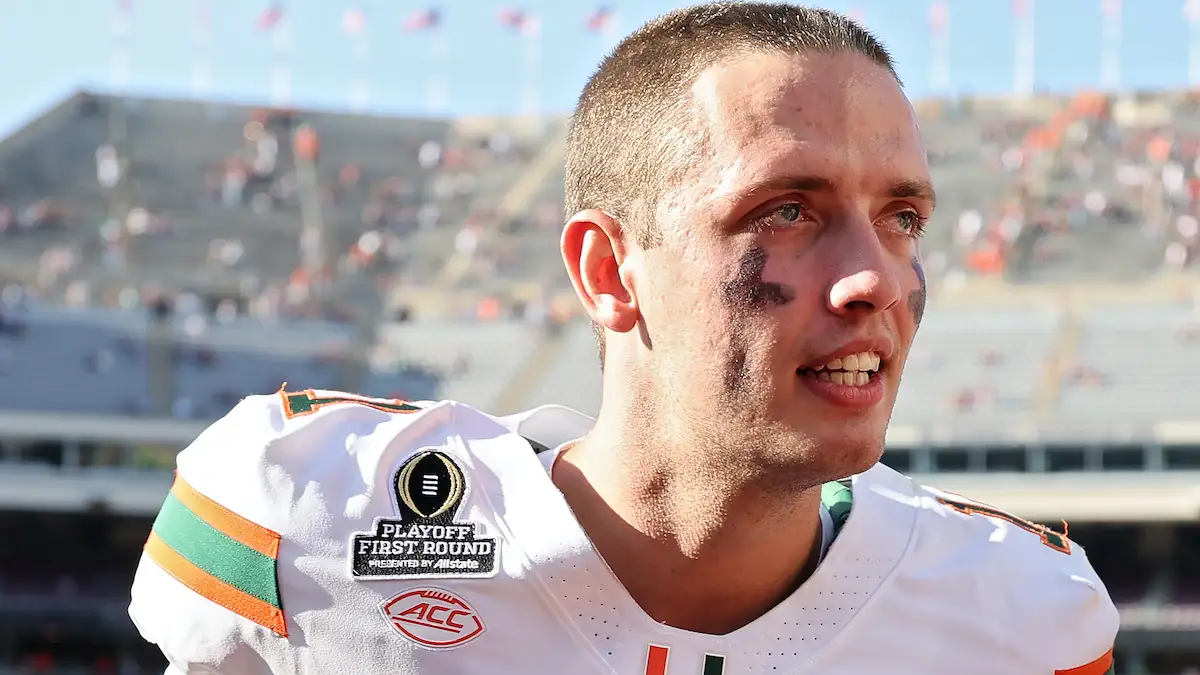

Getty
Carson Beck of the Miami Hurricanes.
Miami Hurricanes quarterback Carson Beck faces what will likely be the most significant challenge of his six-year college football career on New Year’s Eve, when his team faces the defending national champion Ohio State Buckeyes in the Goodyear Cotton Bowl Classic at AT&T Stadium in Arlington, Texas.
The game is a quarterfinal matchup in the College Football Playoffs, so by getting to this point Miami can say it got its money’s worth when it induced Beck to transfer from Georgia, where he spent the first five years of his college career. But how much money does Beck receive?


What is NIL Money?
Until 2021, college football players, like all undergraduate athletes, were supposed to be amateurs. Taking money in any way related to their status as athletes was strictly forbidden under NCAA rules. But a United States Supreme Court decision that June ruled that those restrictions violated federal antitrust laws — opening the door to college athletes receiving monetary compensation for their efforts on the field.
The resulting system allows athletes to be paid for use of their “Name, Image and Likeness,” or NIL. By supposedly limiting pay to an athlete’s personal business activities, the NCAA allowed itself to pretend that its athletes were still “amateurs.”
And Beck is one of the highest-paid “amateurs” in all of collegiate sports.


Miami QB Estimated as 3rd-Highest Paid
According to Pro Football Network’s college quarterback statistical rankings, Beck ranks an unimpressive 36th in the nation in the impact he has made on his team’s ability to win.
But according to the sports financial site On3, as of December 31 Beck owned the third-highest NIL valuation in college football, with a package estimated at $3.1 million.
At No. 1, according to the site, is Texas Longhorns quarterback Arch Manning, whose NIL deal is estimated at $5.3 million. Behind Manning, in the second slot, is the Buckeyes’ sophomore wide receiver Jeremiah Smith, who raked in $4.2 million this season.
In all of college sports, according to the On3 NIL 100 rankings, Beck’s $3.1 million NIL package places him fourth. The 18-year-old Brigham Young University freshman forward AJ Dybantsa, the No. 1 high school basketball recruit in this year’s class, places second, ahead of both Beck and Smith, with an estimated $4.4 million in NIL cash.


Beck Rumored to Receive Much More
Beck’s current $3.1 million estimate, however, is considerably lower than various rumors had him receiving earlier this year, when he transferred from Georgia for his final year of college eligibility. Those initial reports put his NIL compensation in the $4 million range, with some estimates ranging as high as $6 million due to various incentives.
But even back in January those rumors seemed inflated, and reporters Bruce Feldman and Manny Navarro of The Athletic revealed a more realistic figure of “a little over $3 million,” which of course fits with the $3.1 million the 23-year-old is estimated to receive by On3.
According to the Athletic reporting team, however, Beck’s deal was still nearly double the reported $1.6 million received by Beck’s predecessor at Miami, Cam Ward.
Ward became the No. 1 overall NFL draft pick this year. Beck is currently projected by the NFL Mock Draft Database to be selected in the fourth round in 2026.


Jonathan Vankin JONATHAN VANKIN is an award-winning journalist and writer who now covers baseball and other sports for Heavy.com. He twice won New England Press Association awards for sports feature writing. He was a sports editor and writer at The Daily Yomiuri in Tokyo, Japan, covering Japan Pro Baseball, boxing, sumo and other sports. More about Jonathan Vankin
More Heavy on Miami
Loading more stories
NIL
JMU Football Transfer Portal Intel (Dec. 31 update)
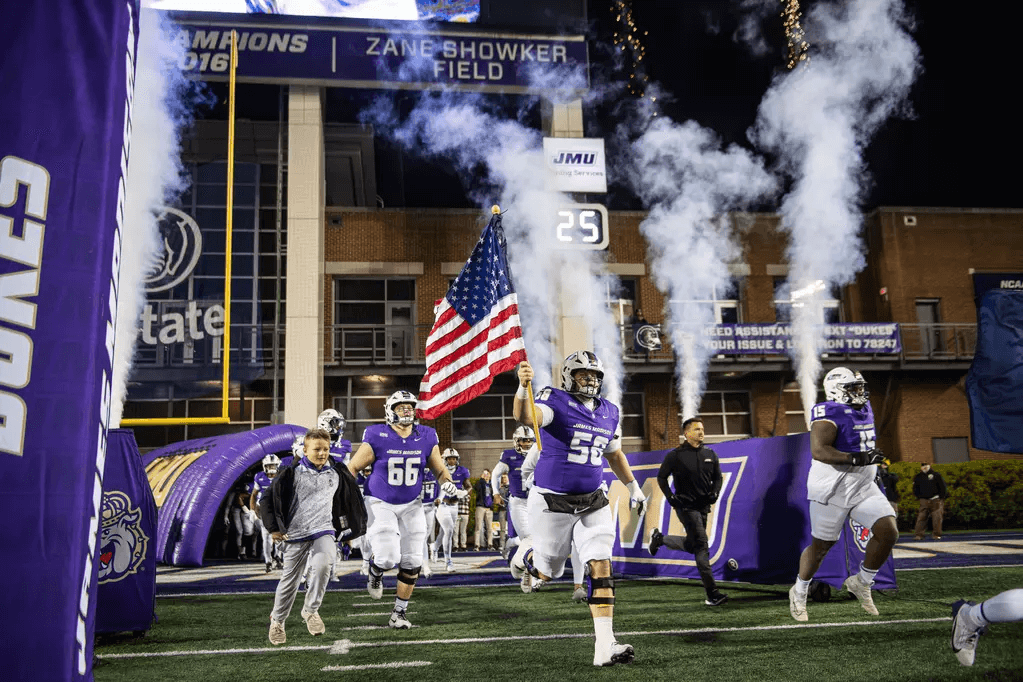
Transfer portal season is underway, although FCS and FBS players have yet to “officially” enter the portal. The portal window for official entrances begins on Jan. 2 and lasts two weeks. Starting on Friday, JMU can officially try to bring in FCS and FBS guys via the portal.
The Dukes have currently offered a host of standout D2 players. Several of them plan on visiting the Dukes in January, including these players:
JT Hooten — A standout LB from West Alabama (6’2 and 215 lbs) with three years of eligibility remaining, Hooten had 69 tackles in nine games in 2025. He has a ton of potential, and he’ll visit JMU this coming weekend, he tells us. He’s received a lot of G5 interest and would be a major addition.
Courage Osawe Jr. — A JUCO DT from Butte College, Osawe is just 19 years old with two years of eligibility left. He posted 20 tackles and two sacks in 2025. The 6’4 and 295-pound prospect also received notable offers from North Texas and UTSA. He’ll visit JMU on Jan. 9 and 10th, he tells us.
Trevell Jones — A LB from Barton College, the 6’3 and 220-pound prospect had 111 tackles in 2025. He’ll visit JMU on Jan. 9, he says. App State, Troy, and Delaware also offered Jones. He’s a stud with one year of eligibility left.
Parker Knutson — 247Sports is reporting that Knutson has visits set with both JMU and Minnesota. He’s a standout CB from Southwest Minnesota State, posting 13 interceptions over the past two seasons. The defensive back would be a massive pickup, although the Minnesota native will be hard to keep away from the Golden Gophers. He has two years of eligibility left.
Other notes
– We’ve heard from a few sources that JMU worked hard to retain current players. Those who plan to enter the portal could still potentially return as they test the portal waters and look for lucrative NIL deals. If the offers don’t meet their expectations, JMU’s increasing NIL budget could sway some guys to return.
– Florida has at least 20 guys expected to enter the portal, according to On3. Some of them saw minimal playing time for the Gators or they had inconsistent performance. It’s possible the Dukes bring in a few former Gators who enjoyed playing for Napier.
– The portal officially opens on Jan. 2 for FCS and FBS players. Players from those levels will start posting official offers, visits, and commitments soon after the portal opens.
– JMU needs help at every position, but quarterback has promise. Quarterbacks Camden Coleman and JC Evans have not announced plans to leave. Keeping those two would be significant.
– Possible returning players likely to step into larger roles in 2026 include Coleman, DB KJ Flowe, DB Chase Regan, LB Trashon Dye, WR Michael Scott, and OL Deacon Rawls, among others. The Dukes have significant returning talent that saw minimal action in 2025.
Photo courtesy of JMU Athletics Communications
NIL
The Nerd’s Auburn Football Transfer Portal Big Board: Offense v1.0
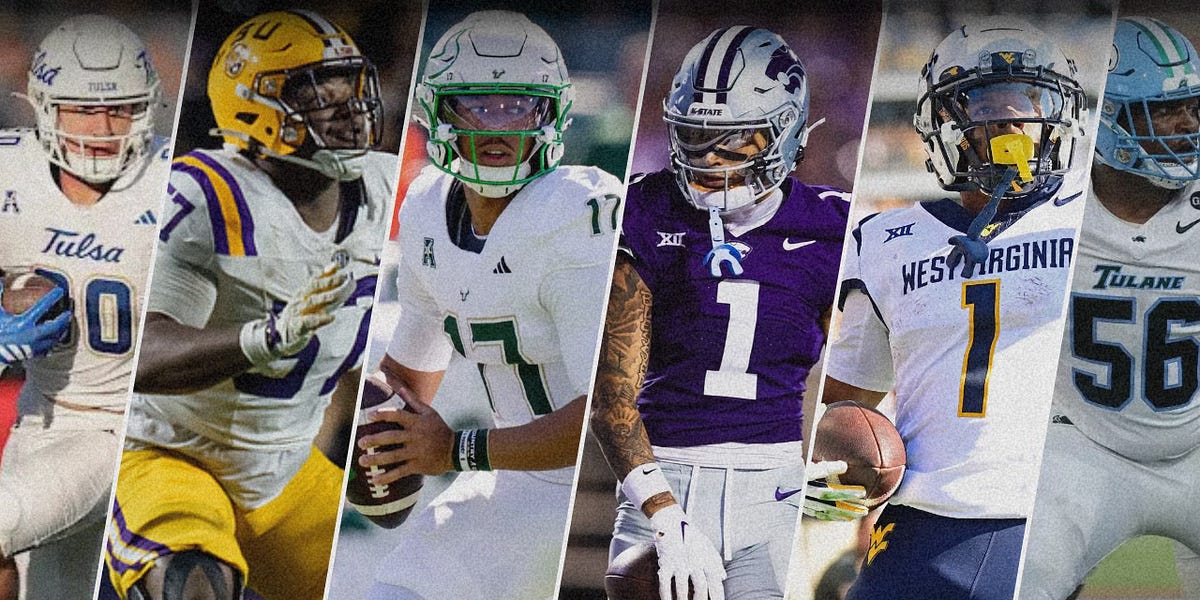
Today’s Observer newsletter is from a new contributor: The artist known as AUNerd, who some of you may remember from his blogging days at College & Magnolia. Nerd is excellent at breaking down Auburn football, especially recruiting, roster management and Xs and Os.
I (Justin) am in a group chat with Nerd, and I saw him starting to put together an incredibly detailed big board of potential targets for Auburn football in what will be a massive transfer portal window for new head coach Alex Golesh and his staff. I loved the idea so much that I wanted Nerd to publish it on The Observer.
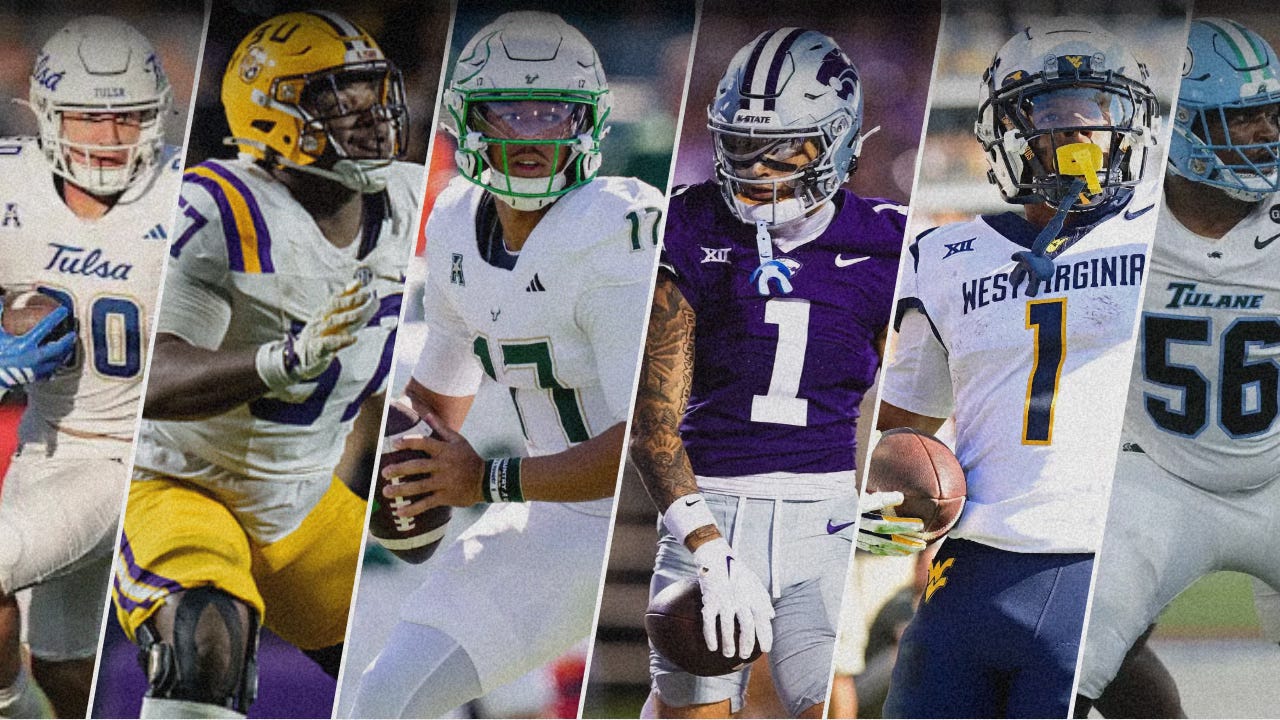
Christmas has passed, but the real gift-opening season in college football is just getting started. Every year, the transfer portal seems to operate on a new set of timelines, and this cycle is no different.
This year features a single portal window, running from Friday, January 2 through Friday, January 16. Players on active College Football Playoff teams receive an additional five-day window (January 20–24), while players on teams that hire a new head coach after January 2 are granted a separate 15-day window.
Gone are the old fall and spring cycles. By the end of January, we’ll have a much clearer picture of what 2026 college football rosters will look like.
It’s also worth noting that players don’t have to commit during this window — it’s simply the only period in which they can enter the portal. That said, spring semester enrollment deadlines at most universities mean many of these decisions will happen quickly.
For Auburn, this portal cycle is critical.
When John Cohen hired Alex Golesh, he emphasized roster retention. Wanting to retain players and actually retaining them, however, are two very different things.
Auburn currently leads the SEC in players entering the portal, with more expected in the coming days. All told, the Tigers may need to add 35-40 new players over the next two weeks.
That number is staggering, but it’s also the reality of modern college football.
What follows is an attempt to identify potential offensive-side portal targets for Auburn. This list is built from a mix of reported intel from Auburn On3 and Auburn247 insiders, along with educated guesswork rooted in prior staff relationships. In today’s portal era, those connections matter more than ever. We saw that last season with Xavier Atkins, who followed a strong relationship with DJ Durkin to the Plains.
One quick note on methodology: you’ll see frequent references to Pro Football Focus (PFF) grades below. PFF is far from a perfect evaluation tool, but without the time — or expertise — to grind full tape on every portal entrant, it serves as a useful proxy for understanding where a player generally stacks up. This is especially true along the offensive line.
Finally, a disclaimer: parts of this list will almost certainly be wrong. A lot will change in a very short window. Think of this as a starting point, both for who Auburn might target and the types of players this staff is likely prioritizing at each position. Everything is subject to change the moment the portal officially opens.
Let’s dive in.
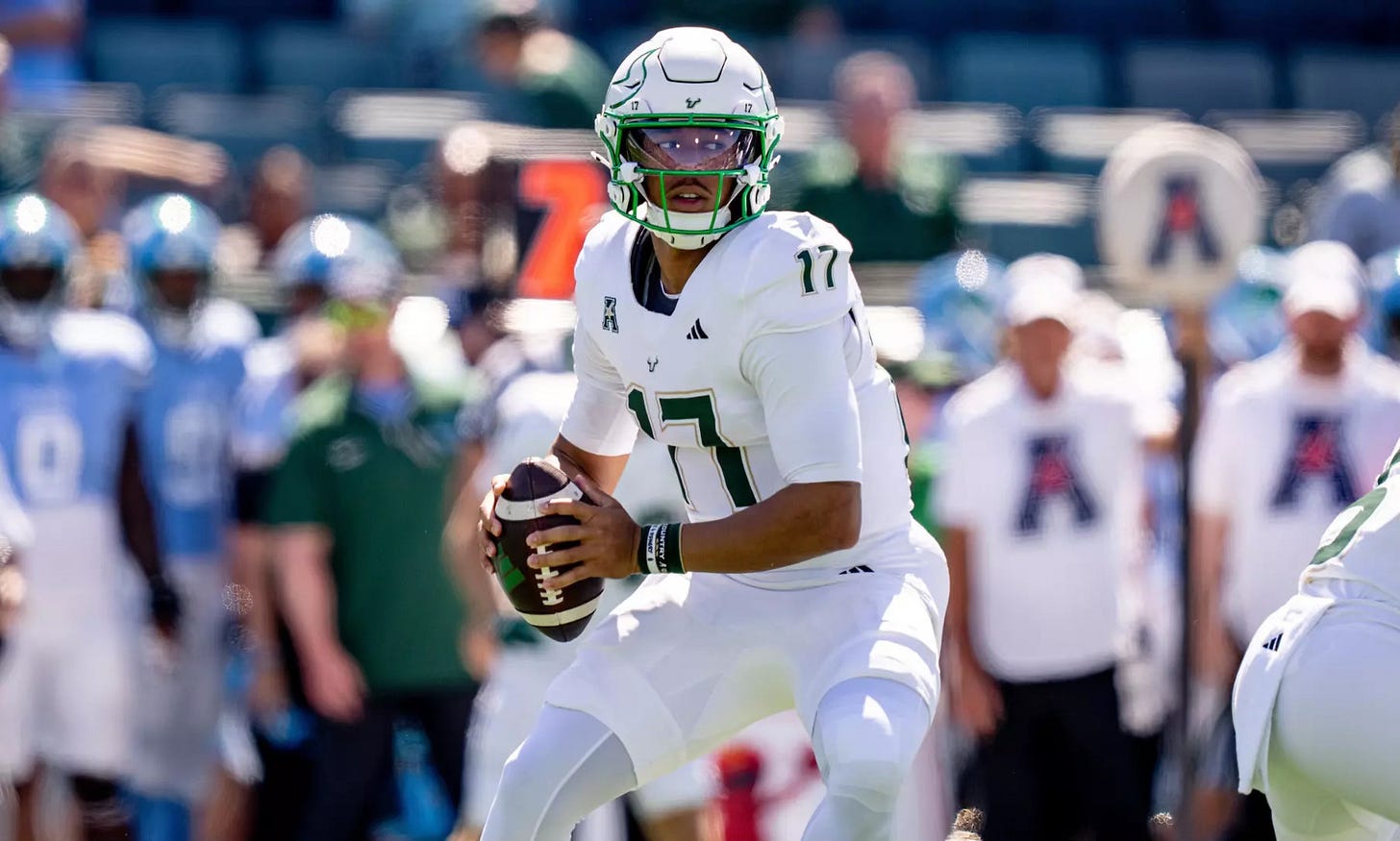
NIL
No. 1 transfer portal player predicted to receive $2 million NIL offer

The NCAA transfer portal officially opens for all college football players on Friday. It will remain open for the two weeks that follow.
Thousands of players across all levels of college football have decided to enter the transfer portal in the weeks following the end of the regular season. Quarterbacks are receiving the most attention of the portal entries, but there are other significant names to watch in the portal.
One of those significant names in the portal is former Auburn wide receiver Cam Coleman. He enters the portal with two seasons of eligibility remaining at his second school.
Hugh Freeze recruited him out of high school as a five-star prospect from Theodore, Alabama. He currently ranks as the No. 1 overall prospect in the NCAA transfer portal.
Coleman appeared in 10 of Auburn’s 12 games in 2024. He grabbed 37 receptions for 598 yards and eight touchdowns in his freshman season.
The Tigers depended heavily on Coleman to facilitate their passing game in 2025. He was their leading receiver with 56 catches, 708 yards and five touchdown receptions.

The schools in the mix for Coleman are prepared to pay significant amounts of money. Pete Nakos of On3 reported that Coleman is expected to command around $2 million in NIL compensation from his next school.
For reference, many quarterbacks across college football are going for around $2 million out of the portal.
With Coleman held in such high regard upon entering the transfer portal, the number of possibilities for where he may land is vast.
Outside of the SEC, Oregon, Miami, and Texas Tech figure to be in the race for Coleman. All three programs have made significant acquisitions in the portal due to their high NIL budgets, particularly the former two at quarterback.
In the SEC, Texas A&M is a program to watch as a potential landing spot for Coleman. He was committed to the Aggies for five months before flipping to the Tigers on Early Signing Day.
An additional reason the Aggies may find themselves in the mix is their success with wide receivers acquired from the portal in the 2025 offseason. KC Concepcion and Mario Craver were acquired from NC State and Mississippi State and both proceeded finish with over 900 receiving yards for the Aggies in 2025.
Texas and Alabama have both been floated as additional candidates for Coleman in the SEC. Both programs have had a successful track record with wide receivers under their current head coaches.
NIL
2025 Year in Review: Top 10 biggest NIL, sports business storylines
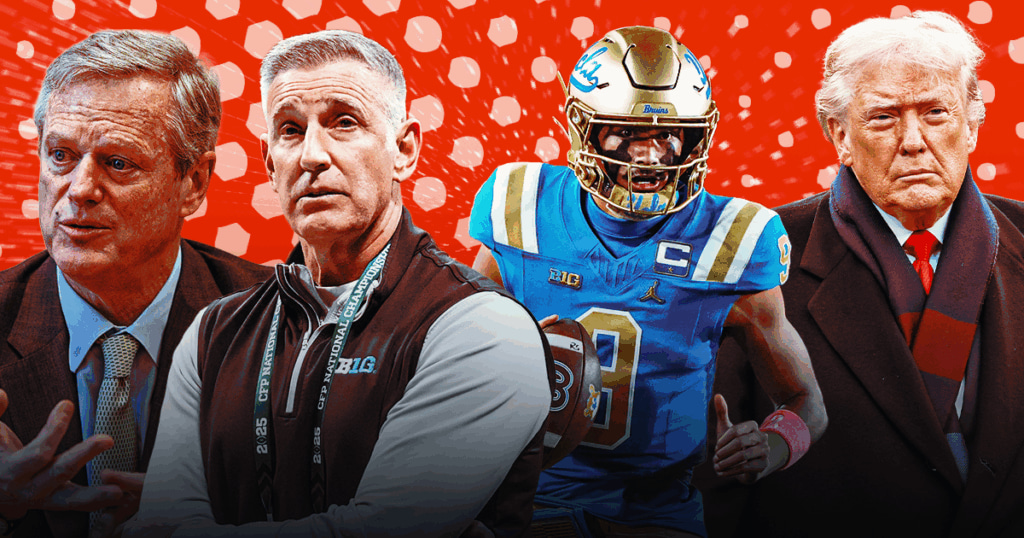
In 2025, college sports underwent another major transformation as revenue-sharing arrived. But that was just one of the top storylines in the NIL and sports business space.
The House v. NCAA settlement became the top story from this calendar year, but private equity is also sure to be part of the conversation into 2026. Those talks took place throughout 2025, with the Big Ten and Big 12 at the forefront.
Advertisement
SUBSCRIBE to the On3 NIL and Sports Business Newsletter
Of course, there was also a high-profile NIL dispute and a major step in the NCAA’s quest for federal legislation to help settle the landscape. Here is On3’s 2025 year in review, breaking down the Top 10 storylines in NIL and sports business.
House settlement ushers in rev-share era
After receiving preliminary approval in 2024, the quest for final approval of the House settlement ended in June 2025. That’s when Judge Claudia Wilken approved the landmark agreement, paving the way for schools to directly share up to $20.5 million with athletes. It also brought about the College Sports Commission as a new enforcement entity, led by CEO Bryan Seeley.
Advertisement
The CSC launched to enforce key terms of the 10-year settlement, including the NIL Go clearinghouse, which received a slew of criticism after its initial debut. NIL Go has cleared $87.5 million in deals as of the last update Nov. 6. However, the CSC’s participation agreements are also generating skepticism as 2025 winds down.
Private equity, capital talks swirl
As schools prepared for rev-share, the idea of private equity and private capital came about in college sports, with the Big Ten and Big 12 front-and-center. The Big Ten has explored a more than $2 billion private capital deal, but it generated pushback from some member schools.
Additionally, Ross Dellenger reported the Big 12 is nearing a private capital deal of its own which would infuse millions to member schools. A Big 12 school also announced a first-of-its-kind equity deal in December. Utah announced a deal with Otro Capital, which would infuse up to nine figures in cash and create a for-profit entity, Utah Brands and Entertainment.
Advertisement
Nico Iamaleava transfers amid NIL dispute
Late in the spring college football transfer portal window in 2025, On3’s Pete Nakos reported Tennessee and quarterback Nico Iamaleava were in active negotiations about a new deal. However, the situation took multiple turns, and Iamaleava later entered the portal.
Iamaleava missed a practice before the Vols’ spring game, Volquest reported, and Tennessee ultimately decided to move on from him. He later committed to UCLA, but the reaction poured in from across the college football world after the NIL dispute. At Big Ten Media Days, Iamaleava told reporters his departure was not due to NIL, but rather a desire to play closer to family.
College football coaches’ buyouts skyrocket
One of the biggest storylines of the 2025 college football season was the amount of money schools paid in coaching buyouts. Multiple high-profile firings led to more than $228 million in buyout money handed out, flying past the previous record of $132 set in 2023 – fueled by Jimbo Fisher’s $77 million figure.
Advertisement
LSU coach Brian Kelly received the highest buyout of the cycle at $53 million, and James Franklin’s $49 million buyout at Penn State dropped to $9 million after he took the Virginia Tech job and triggered his duty to mitigate clause. Kelly’s buyout is the second-largest in history behind Fisher’s, and Billy Napier received the third-largest from Florida at $21 million.
Wisconsin sues Miami after Xavier Lucas transfer
One of the biggest transfer stories of 2025 didn’t involve the portal at all. Wisconsin DB Xavier Lucas withdrew from the university and enrolled at Miami. The University of Wisconsin then sued the University of Miami and its NIL collective for alleged tortious interference.
The suit marked an unprecedented moment in college athletics as one university sued another over financial damages. Miami later filed a motion to dismiss the suit, On3’s Pete Nakos and Brett McMurphy reported, which is still being worked through.
Advertisement
ACC settles lawsuit with Florida State, Clemson
One of the ACC’s top priorities in 2025 was to settle lawsuits brought by Florida State and Clemson, challenging the conference’s grant of rights. Both boards approved settlement terms in March, ending the legal battles on all fronts.
As part of the agreement, the ACC will have a new exit fee structure and revenue distribution model. It will now be based on a five-year rolling average of TV ratings, with a majority share of the base media rights placed into a viewership pool for distribution.
Former NBA Draftee James Nnaji deemed eligible
Amid multiple eligibility questions the NCAA faced in 2025, one of the biggest decisions came in December. James Nnaji, a former NBA Draft pick, signed with Baylor after receiving four years of eligibility. That decision brought plenty of reaction across college basketball.
Advertisement
Though the Detroit Pistons drafted Nnaji – and his draft rights were part of the Karl-Anthony Towns trade to the New York Knicks – he never played in an NBA or NBA G-League game. Instead, he played professionally in Europe. The NCAA granted Nnaji four years of immediate eligibility, meaning he can join Baylor for the rest of the 2025-26 season.
NCAA’s quest for federal legislation stalls
Since the NIL era began, the NCAA has been searching for federal legislation to help settle the landscape. Those efforts ramped up in 2025, and the SCORE Act was on track for a vote on the floor of the U.S. House of Representatives at one point. However, the vote was removed from the schedule that day, and Senate Democrats criticized the legislation.
The SCORE Act was one of a handful of college sports-focused bills announced. The COACH Act was introduced in October to cap college football coaches’ salaries and buyouts, and the “Restore College Sports Act” was introduced in March. That bill would create an entity to replace the NCAA.
Advertisement
President Donald Trump wants to get involved
Amid the NCAA’s pursuit of a federal bill, President Donald J. Trump also made it clear he was willing to step in to help settle things down. He took multiple steps toward that goal, notably signing an executive order in July to crack down on pay-for-play, third-party NIL deals.
Trump was also putting together a presidential commission with Texas Tech booster Cody Campbell and former Alabama head coach Nick Saban as co-chairs. Plans for the commission were paused, but Trump remained vocal about NIL in college athletics.
College football TV ratings surge
Throughout the 2025 college football season, TV ratings surged. Regular-season viewership increased by 9% from a year ago, and ABC emerged as the biggest winner.
Advertisement
ABC aired 17 of the Top 20 most-watched games of the year, led by Texas vs. Texas A&M in their Week 14 rivalry game. FOX, however, had the top two games of the season: Ohio State’s Week 14 win over Michigan (18.4 million) and the Buckeyes’ Week 1 victory over Texas (16.6 million) led the way.
College athletics saw plenty of changes throughout 2025 as the NIL and rev-share eras are officially underway. Heading into 2026, though, there are still plenty more storylines to track in the ever-changing space.
NIL
Arch Manning’s NFL Draft Projections & NIL Earnings Are Complicated
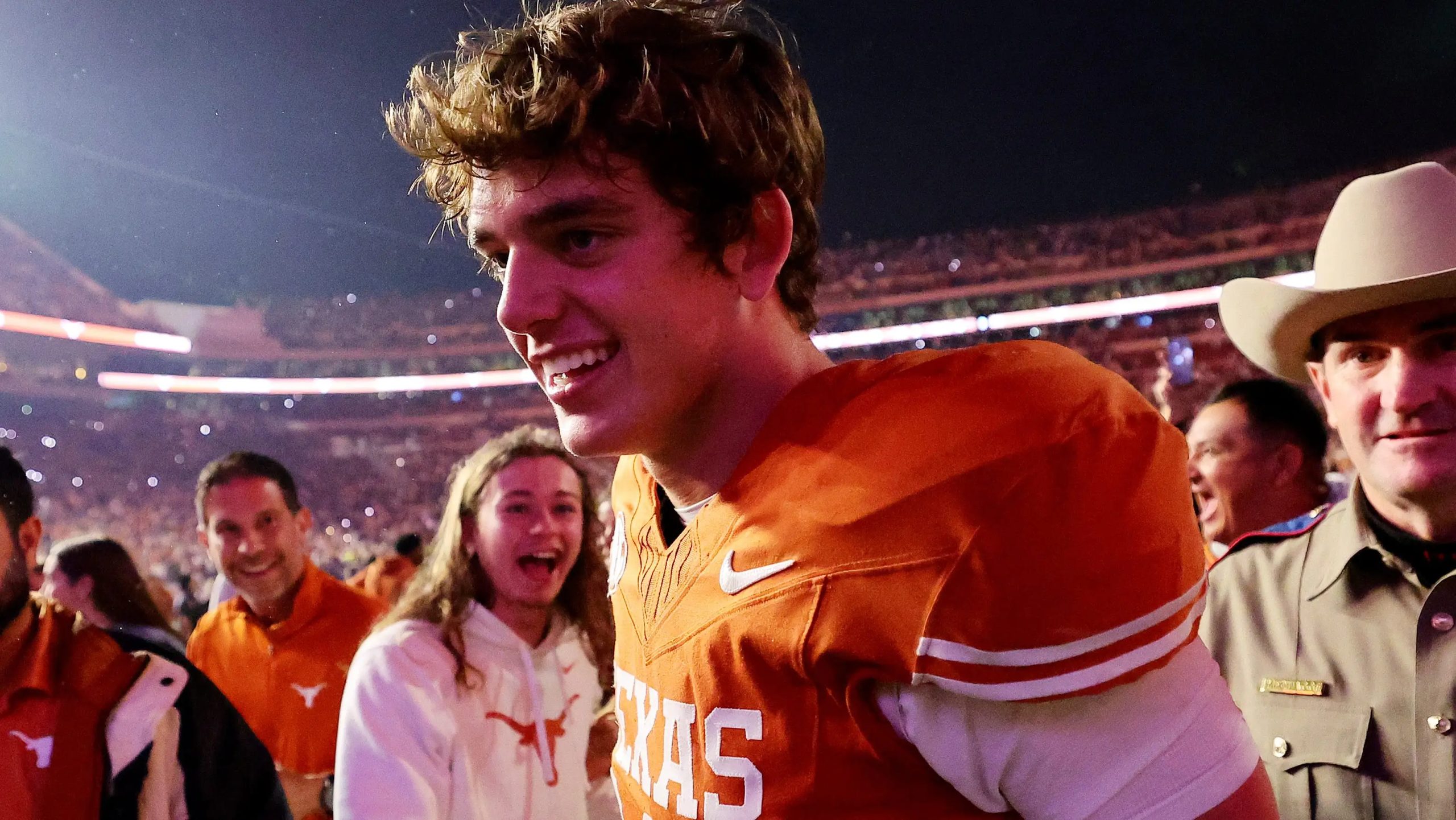

Getty
Texas quarterback Arch Manning is not declaring for the 2026 NFL draft.
After a college football offseason full of hype, it has been a challenging year for Texas quarterback Arch Manning, complicating his potential NFL draft future. Additionally, Manning’s NIL projections took a hit amid his inconsistent production. The good news for Manning is that the star bounced back after a slow start to the season.
Manning will get another college football season to bolster his NFL draft stock. The Longhorns signal-caller made it clear that he plans to return to Texas for 2026 instead of declaring for the NFL draft.
Manning was once projected to be the No. 1 pick in the 2026 NFL draft, but the signal-caller could have found it challenging to get selected in the first round if he turned pro.
“I felt like I developed a lot this year, especially towards the back half, and I want to keep it going,” Manning told reporters on December 28, 2025, per Inside Texas’ Evan Vieth.
“There’s no reason to leave. I feel like I got a lot more football left to play, and excited to still be a part of this team.”
Here’s what you need to know about Manning’s NFL draft stock and NIL deals.
Texas QB Arch Manning’s NIL Value Dropped From $6.8 Million to $5.3 Million
Manning’s NIL valuation has also taken a hit with the quarterback’s projected earnings dropping $1.5 million since the beginning of the college football season. The Texas star entered the season with an NIL projection of $6.8 million, per On3.
Manning’s latest NIL projections are $5.3 million, but it is safe to say that the quarterback still remains one of the most marketable college football players. These projections still leave Manning with the highest NIL value of any college athlete.
It is worth noting that NIL deals are rarely made public. While these projections may fluctuate week-to-week based on a player’s performance, this is not typically how NIL contracts work. Manning likely signed NIL deals for a specific amount which would not rise or fall after one week’s performance.
The star’s NIL deals include Uber, Warby Parker, Vuori, Raising Cane’s, Red Bull and EA Sports among others.
Arch Manning Is Projected To Be a Top Prospect in the 2027 NFL Draft
Not everyone is sold on the idea that Manning’s NFL draft stock has taken a massive hit. One NFL scout told Fox Sports that Manning would have a chance to be the No. 1 pick if the quarterback entered the 2026 NFL draft.
“He might still go No. 1,” one NFL scout told Fox Sports’ Ralph Vacchiano for a December 10, feature story titled, “NFL Confidential: Scouts Say Arch Manning Would Be No. 1 QB in 2026 Draft.” “All the tools are there, even if the performance was erratic. He might need a little time to grow into himself as a player. But he’s got the size (6-foot-4, 219 pounds), the arm, the intangibles, and the kid had some great games.
“I think I’d still feel better about his future than anyone else in this year’s class.”
With the 2026 NFL draft still taking shape, it is even more challenging to project the top prospects for 2027. Walter Football’s Charlie Campbell released an early look at a mock for the 2027 NFL draft.
The mock draft projects the Cleveland Browns take Manning with the No. 4 overall pick in 2027. Manning still has plenty of time to improve his draft stock.
Jonathan Adams is a veteran sports contributor covering the NFL, NBA and golf for Heavy.com. His work has been prominently featured on NFL.com, Yahoo Sports, Pro Football Talk, CBS Sports, Bleacher Report and Sports Illustrated. More about Jonathan Adams
More Heavy on Texas
Loading more stories
-
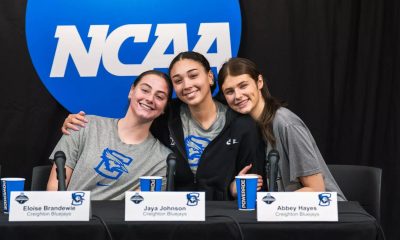
 Sports3 weeks ago
Sports3 weeks ago#11 Volleyball Practices, Then Meets Media Prior to #2 Kentucky Match
-
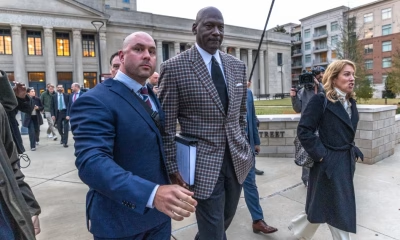
 Motorsports3 weeks ago
Motorsports3 weeks agoNascar legal saga ends as 23XI, Front Row secure settlement
-

 Motorsports3 weeks ago
Motorsports3 weeks agoSunoco to sponsor No. 8 Ganassi Honda IndyCar in multi-year deal
-
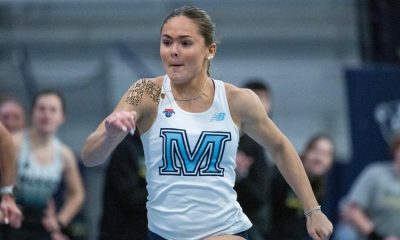
 Sports3 weeks ago
Sports3 weeks agoMaine wraps up Fall Semester with a win in Black Bear Invitational
-
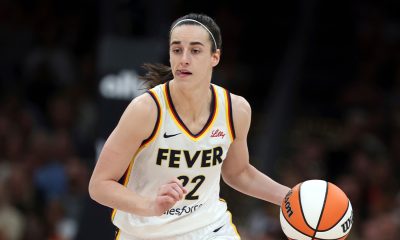
 Rec Sports3 weeks ago
Rec Sports3 weeks agoWNBA’s Caitlin Clark, Angel Reese and Paige Bueckers in NC, making debut for national team at USA camp at Duke
-

 Motorsports2 weeks ago
Motorsports2 weeks agoRoss Brawn to receive Autosport Gold Medal Award at 2026 Autosport Awards, Honouring a Lifetime Shaping Modern F1
-
Motorsports3 weeks ago
NASCAR, 23XI Racing, Front Row Motorsports announce settlement of US monopoly suit | MLex
-
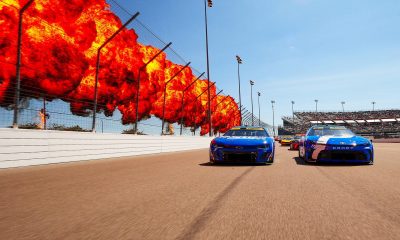
 Motorsports3 weeks ago
Motorsports3 weeks agoRick Hendrick comments after the NASCAR lawsuit settlement
-

 NIL3 weeks ago
NIL3 weeks agoNike Signs 10 LSU Athletes to NIL deals
-
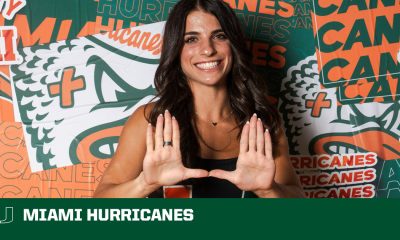
 Sports3 weeks ago
Sports3 weeks agoCreating a Legacy: Maddie Scheier

































